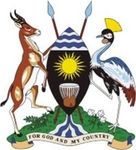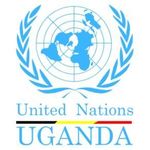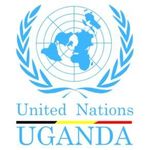Good Practice Promotion of Alternative Condom Distribution Mechanisms
←
→
Page content transcription
If your browser does not render page correctly, please read the page content below
Context
Uganda's HIV/AIDS prevalence rate of people aged between 15 and 49 is 6.7 % and has increased
compared to previous years. This is partly attributed to the increasing population, which currently
stands at around 34 million. Despite years of condom promotion, it has also been found that infection
rates for men and women are highest among people in their 30s and 40s, and lowest in the age group
between 15 and 19 years old. The HIV prevalence rate among married and cohabiting couples is 6,6 %.
In 2009 the Ugandan Red Cross Society (URCS) noticed that a lot of the condoms in the national stock
were destroyed because they expired without being distributed or used. At the same time the
prevalence rate of HIV in Uganda continued to increase. Taking the above into consideration DANIDA
together with UNFPA developed a program to strengthen HIV/AIDS prevention efforts through building
the capacity of the Ministry of Health (MoH) and civil society partners, including URCS, in managing and
implementing an efficient national comprehensive condom promotion programme (CCPP) targeting the
most at risk groups. The programme interventions focus on increasing the availability and easy access to
condoms by creating alternative condom distribution mechanisms. The mechanisms consist of existing
peer networks that promote and strengthen the availability and use of condoms in the districts with
high HIV prevalence rates, namely Kampala, Kanungu and Mubende.
Objectives
The objectives of the alternative condom distribution
mechanism programme by URCS is 1) to establish alternative
condom distribution mechanism using existing peer networks
in three districts, namely boda-boda riders, taxi operators,
saloons, garages, car washing bays, lodges, bars, disco halls and
night clubs, and 2) to distribute 4 million condoms to the target
population in Kampala, Kanungu and Mubende.
Strategy and Implementation
Some of the Most at Risk People (MARPs) include taxi and bus
drivers as well as the so-called boda-boda riders; motor taxi
drivers in Uganda who dominate the streets of Kampala and
beyond. The nature of the work of boda-boda riders means
that they have cash income on a daily basis and it is not
uncommon for boda-boda riders with families far outside of the
capital city to go to sex workers in town. At the same time their
work brings them in regular contact with people who go out in
the weekends, commercial sex workers as well as their clients.
In addition people working in bars, discotheques, night clubs, A volunteer hands out free condoms in the
garages, car washing bays, lodges and saloons were also central taxi stand of Kampala
identified as MARPs and as ideal peer network distribution
channels. In order to increase the access and availability of condoms URCS involved these MARPs to
establish alternative condom distribution mechanisms. In the first quarter of 2011 URCS trained 200
boda-boda riders and another 400 in the third quarter of 2011 because of the popularity of the
programme among friends and colleagues of the already trained boda-boda riders. In addition URCS
trained taxi and bus drivers, karaoke dancers, saloon attendants, vehicle mechanics, car washers and
disco/lodges/bar attendants. The training consisted of information on HIV/ Aids, prevention, use of
1condoms and distribution. Upon request the second round of trainings also included road safety for the
drivers. After successful completion of the training boda-boda riders were equipped with easily
recognizable helmets, reflecting jackets and bags marked with texts such as “get free condoms” and
“have a safe ride!”. Of course all trained volunteers were also provided with large boxes of condoms for
distribution. The URCS follows up with the volunteers and also involves them in other Red Cross
activities such as the distribution of information leaflets. There is regular contact between the
volunteers and the Red Cross since the volunteers come to the Red Cross branches regularly to pick up a
new supply of condoms for free distribution.
Key challenges
“We have created Because of the success of the programme a high demand has been
created for the free distributed condoms. However the supply side is
the demand now
a challenge since URCS reported a lack of constant supply by the
we have to make MoH and consequently a shortage of condoms. Secondly the high
sure condoms are mobility of the distributors, especially boda-boda riders and bar
available at all attendants has affected the continuity of the programme and
times” distribution in some cases. In addition the trained distributors find it
challenging to keep records of their condom distribution work and
Alex Onzima, URCS data is mainly collected at the level of URCS where condoms are
handed out to the voluntary distributors. Taxi drivers, bus drivers,
boda-boda riders and lodge receptionist received complaints from
condom users about the quality of the condoms. Many people
believe that since the condoms are free, the quality must be poor. In
addition the free condoms are packed in boxes of 144 at the time and handed out without a small box
around them, hereby exposing the condoms and making it hard for shy people to “quickly hide them in
their pockets”. Lastly people remarked that the condoms are plain and not marketed well like condoms
in the shops such as ‘Rough Riders’ and ‘Trust’ that sell condoms in packs of three for 1000 Ugandan
Shillings (40 dollar cents) with a “sexy photo of a couple on the front, fancy colours and instructions on
the use of the condom on the inside of the package”.
Progress and Results
In 2011, a total of 4,524,980 condoms have been
distributed through the alternative channels out of
the planned 4,000,000 condoms. Alternative
distribution mechanisms have been established
among boda-boda riders, bus and taxi drivers, car
washing bay groups, garages, saloons owners,
bars/night clubs, lodges (guest house) attendants
and disco hall attendants. In total 600 boda-boda
riders, 150 DJ and karaoke dancers, 350 mechanics,
car washers and salon attendants have strengthened
their knowledge and skills in HIV prevention and
condom promotion through the URCS trainings. The
trained distributors are now much more aware
about the risks that they are exposed to and were
able to clear any myths about HIV prevention, such Central bus and taxi park in Kampala where volunteers (taxi,
as the misconception that male circumcision by itself bus drivers and boda-boda riders) distribute free condoms
2is protection enough. The programme quickly became popular. One of the boda-boda leaders explains:
“Boda-boda riders were initially motivated to join the programme because of the supply of jackets,
helmets, stickers and bags. However our core motivation is the understanding that we ourselves and our
friends are at risk of being infected with HIV. In the trainings we talked about the dangers, exposure and
how to protect ourselves. Lastly, it is fun to do!” Initial shyness among voluntary distributors about
handing out condoms was quickly replaced by a sense of
responsibility and even pride. One of the bus drivers stated: “The
Red Cross made us proud to be distributing condoms free of charge.
Some people can’t afford condoms and by distributing them for free “We, as boda-boda riders
to these people we are saving them from HIV/Aids and unwanted now question each other:
pregnancies”. if one of the riders sneaks
out to go to a sex worker,
As a result of the free condom distribution networks, the demand
for condoms has increased significantly. In addition condom users his colleagues will say
now know where to find the free condoms and many have become “we know where you are
regular customs of the boda-boda riders, drivers and car garages going, are you bringing a
where free condoms are being distributed. A relationship of trust condom?!”
developed and this has also positively affected the businesses of the
volunteers. Volunteers hand the free condoms out to whoever asks Boda-boda rider in Kampala
for them, including students, sex workers, youth and business
people. In the guest houses where customers come for ‘short term
rooms’ during the workweek, the peak times of distributing free
condoms are between 9AM and 15 PM. Free condom distribution
by boda-boda drivers and bus/taxi drivers doubles during the weekend when people go out to bars and
discotheques. Both boys, girls, men and women take the free condoms and use them to protect
themselves as well as for family planning purposes. In terms of sustainability, according to URCS the
program will not be able to continue when the supply of condoms by the Ministry of Health will stop.
However the results will be sustainable, since URCS aimed to create awareness and to increase the
frequent use of condoms among the target groups. “If people use condoms frequently for one year than
the likelihood of using a condom again increases significantly”.
Conclusion and Lessons Learned
Strengthening alternative condom distribution mechanisms has greatly contributed to an increase in the
use of condoms among the most at risk groups and therefor contributes to reducing the spread of
HIV/AIDS and unwanted pregnancies. The distribution of condoms through boda-boda drivers is seen as
a friendly mechanism, People are scared to buy condoms inside the shops because of shyness and fear
of being seen by others. Condom machines inside public toilets are effective; however these machines
do not provide information on how to use condoms. According to URCS “the boda-boda drivers do both:
they distribute condoms AND provide information on how to use them”. The so-called cascade model as
applied by the boda-boda riders has increased the demand for condoms among their peers. As evidence
shows the URCS frequently receives requests from new untrained boda-boda riders and other people
who come to ask for condoms and information. One of the lessons learned is that it is important to stay
in regular contact with the voluntary distributors and to make them feel part of the organisations.
3The programme also produced some unexpected results, including increased business for the volunteers
and improved road safety among the volunteers. Upon request of the boda-boda riders the URCS
decided to include a road safety component in the training. One boda-boda riders explained: “I have
been driving for the last 5 years, I never saw somebody dying because of HIV/Aids, but I did see people
dying from traffic accidents”. Because of the training and the sense of responsibility that drivers have
(“If you wear a UNFPA/URCS helmet and jacket you have to drive responsible and safe!”) the road safety
increased among the trained volunteers.
Recommendations and Next Steps
As part of the programme, URCS volunteers suggested
creating outreach services for Voluntary Counseling
and Testing (VCT), since there are long queues inside
the public hospitals and people don’t like to wait for a
long time nor risk being seen in public places. Another
suggestion was to create a project on sexual education
that targets young girls, since “Traditionally, the so-
called aunties would teach girls about sexuality since
parents fear to talk to their daughters about sex. These
days it is difficult for girls to obtain information about
safe sex”. The trained distribution volunteers also
requested to acquire additional knowledge and skills
through follow-up trainings, especially on how to “The free condoms don’t have labels like the ones in the
comfortably answer difficult questions by condom shops, so customers wonder “where do the condoms
users. In addition, because of the high demand for come from?” People don’t trust the condoms without
labels and think that they are fake!”
condoms both the number of volunteers and the
supply of condoms needs to be increased. Lastly many Peter, receptionist at Atlanta II guesthouse
volunteers suggested that the free condoms should
come in different sizes and they should be marketed in a more attractive manner and packaged in small
attractive looking boxes of three condoms with instructions on the inside of the box.
Sources and Contact Persons
Primary sources
- Good practice documented by URCS April 2012
- Interview with URCS (Alex Onzima, programme manager, Michael Dember, Project manager RH
and adolescents, Goram Musinguzi, branch manager, Michael Kasozi, branch manager, Kwaro
Alan, communication officer and Lwgula Dismas, M&E officer) in Kampala May 29th 2012
- Focus Group Discussion with 4 boda drivers and 4 car mechanics in Kampala May 29th2012
- Focus Group Discussion with 4 bus drivers in the central bus park of Kampala May 29th 2012
- Interview with receptionists Peter and Alex at Atlanta II Guesthouse in Kampala May 29th 2012
Contact persons
URCS: Michael Dembe, mdembe@redcrossug.org & Alex Onzima aonzima@redcrossug.org
UNFPA: Brian Kironde, kironde@unfpa.org & Rosemary Kindyomunda, kindyomunda@unfpa.org
Author: Karin Weber, karin@karinweber.info and www.karinweber.info
4You can also read

























































